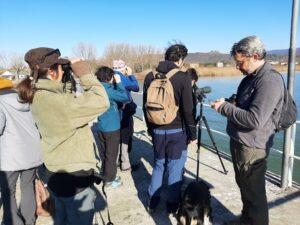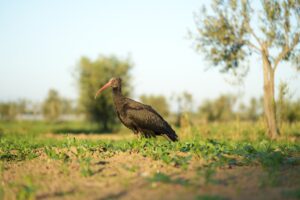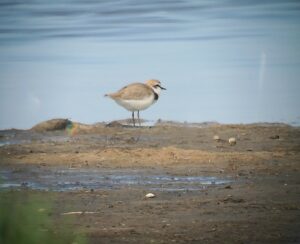Birds matter
Italy has a precious natural treasure that has been bestowed  upon us, and it’s our duty to protect and enhance it. Thanks to conservation measures and projects, we have been ensuring the highest level of protection, as it’s an important asset and growth value of our country. Among the major conservation actions may be mentioned the Life Natura projects, as developed under EU Directives “Birds” and “Habitats”, other than specific initiatives of national and regional parks in cooperation with research institutes and scientific societies. Whatever the action is, the goal is to ensure the protection of nature whilst taking into account economic, social and cultural requirements. Many projects related to endangered bird species are carried out within this system. The following are some that have achieved strong results.
upon us, and it’s our duty to protect and enhance it. Thanks to conservation measures and projects, we have been ensuring the highest level of protection, as it’s an important asset and growth value of our country. Among the major conservation actions may be mentioned the Life Natura projects, as developed under EU Directives “Birds” and “Habitats”, other than specific initiatives of national and regional parks in cooperation with research institutes and scientific societies. Whatever the action is, the goal is to ensure the protection of nature whilst taking into account economic, social and cultural requirements. Many projects related to endangered bird species are carried out within this system. The following are some that have achieved strong results.
The northern bald ibis, Geronticus eremita, is one of the most bizarre birds in the world. Historically, colonies of several thousand individuals could be found in Switzerland, Austria, Germany, Italy, Spain, Hungary, and Greece. Human persecution began no later than the 16th century, when ibis, especially young birds, were considered a delicacy; by the early 17th century, the ibis had disappeared from Europe.
Today, the northern bald ibis is classified as Critically Endangered by the IUCN, and inhabits only a tiny fraction of its original range.
Thanks to a project of EU LIFE, a migratory population of northern bald ibises was re-established in Europe. The project removed two-week-old zoo-bred nestlings from their parents and imprinted them on humans. In late summer, the juveniles were then taught to follow a motorized ultralight aircraft on the 600-mile journey to Tuscany. As of 2019, there were three breeding colonies, totaling 71 pairs, north of the Alps, all wintering in Tuscany’s Maremma. By the end of 2028, more than 260 northern bald ibises are expected to migrate between the Alps and Tuscany.
The lanner falcon, Falco biarmicus, is a medium-sized raptor with a very wide distribution, from the Mediterranean to the Middle East and Africa Only feldeggii subspecies is found in Europe, where it is restricted to the Mediterranean area. Despite its protected status, the entire European population is declining, and the species is believed to be one of the rarest raptors on the continent. This bird have always been particularly vulnerable to direct persecution, electrocution, collision, habitat loss, and pesticides. Eggs and chicks are still taken from the wild for falconry.
The EU’s Life Program financed a five-year project at Lago di Vico Nature Reserve, in the Lazio region, to increase the population in Italy by releasing a large number of young lanners into the wild and restoring some 300 acres of natural and semi-natural grassland as hunting areas other than create potential nesting sites on rocky cliffs.
The lammergeier, Gypaetus barbatus, was a common species in a distant past throughout the Alps and the Pyrenees. Because of stupid beliefs, a persecution of the species then began. This resulted in the vulture’s precipitous decline and to its extinction in the Alps in the early twentieth century.
An international reintroduction project using captive-bred birds was launched in 1978. Individuals were released in Italy’s Stelvio National Park beginning in 1998, and soon the Aosta Valley and surrounding areas were occupied by several successfully breeding pairs. Thirty nesting pairs were tallied in the Italian Alps in 2022 and 2023.
The endangered Kentish plover, Charadrius alexandrinus, is in sharp decline throughout Europe. Nests are destroyed by machinery used to level and clean the beaches. Others are lost to people and dogs. Without protection, this pale little shorebird might disappear from the continent entirely.Today, there are only a few places in Europe that still host this species. In Italy, volunteers and ornithologists protect nests with simple but effective actions and often creative solutions. They marked the edge of the dunes, installed anti-predatory cages over nests, and monitored movements of humans and dogs in the beach, educating beach-goers on social media, and forging alliances with stakeholders and institutions. An effective information campaign has also helped people understand that the conservation of this species requires only a little attention on their part.
